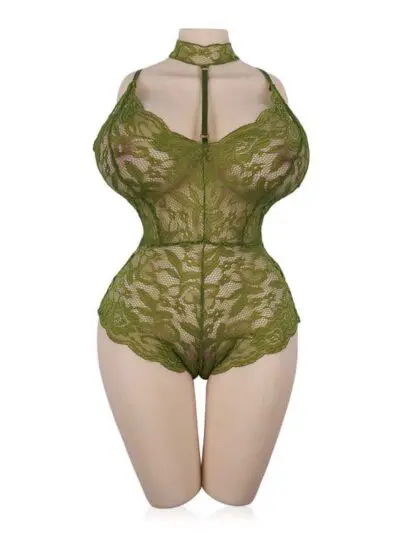In recent years, the emergence of life size female doll models has sparked discussions regarding their role in human companionship. These models, with intricate details to mimic human features, are gaining attention. Particularly, for their potential to provide companionship and emotional support to individuals.
In this article, we delve into the phenomenon of life size female doll models. Furthermore, we’ll explore their origins, development, impact on society, and the complexities surrounding their role in fulfilling human needs.
Origins And Development
The concept of creating doll lifesize models for companionship purposes traces back centuries. Historical evidence suggests the existence of rudimentary versions dating back to ancient civilizations. However, it wasn't until recent advancements in technology and materials enabled the creation of highly realistic human size dolls.
Initially conceived as adult novelties or erotic accessories, these life size dolls for adults evolved significantly in terms of design. Modern iterations boast lifelike appearances, featuring detailed facial features, realistic skin textures, and customizable options such as hair and eye color. Manufacturers utilize materials like silicone and TPE to achieve a tactile sensation akin to human skin. This enhances the overall sensory experience for users.
The Role of Companionship
One of the most intriguing aspects of full size dolls is their potential to fulfill companionship needs. Particularly, for individuals who are seeking emotional support or intimacy. The traditional norms often dictate that companionship is exclusively human-to-human. However, the rise of these human life size doll models challenges conventional perspectives on interpersonal relationships.
For some individuals, particularly those who struggle with social interaction, these dolls offer a sense of connection and emotional fulfillment. The presence of a full size female doll can provide comfort, companionship, and a non-judgmental listening ear. Thus, serving as a source of solace in times of distress or isolation.
It's important to acknowledge that the motivations behind seeking companionship from life size woman doll models vary widely among individuals. Some may view these dolls as mere objects of gratification. Meanwhile, others form deep emotional bonds with these life size female doll models, treating them as genuine companions and confidants.
Ethical Considerations Surrounding Life Size Female Doll Models and Companionship
The growing popularity of life size female doll models sparks ethical debates surrounding the nature of human and doll relationships. Critics argue that the commodification of companionship through these life size female doll models may perpetuate harmful attitudes toward women.
Furthermore, there are concerns regarding the potential for these dolls to reinforce unhealthy or unrealistic expectations of beauty and sexuality. Particularly, among vulnerable populations such as adolescents or individuals with body image issues.
Proponents of life size female doll models, on the other hand, advocate for the autonomy of individuals to seek companionship. Significantly, when it does not harm others or infringe upon ethical boundaries. They argue that these dolls can serve as a therapeutic tool for individuals grappling with mental health challenges. Thus, offering a safe outlet for emotional expression and intimacy.
Moreover, the proliferation of these models ignites a complex dialogue surrounding their role in providing companionship. These dolls offer a semblance of intimacy and emotional support to some individuals. But also, their existence raises profound questions about objectification, norms, and their impact on human relationships.
Humanization Vs. Objectification
One of the central ethical dilemmas surrounding life size female doll models is the tension between humanization and objectification. Proponents argue that these dolls offer companionship and emotional fulfillment to individuals who may struggle with social interaction or loneliness. By anthropomorphizing these objects, users can develop genuine emotional connections, fostering a sense of companionship and connection.
However, critics contend that treating these figures as substitutes for human companionship objectifies both. The dolls themselves and the individuals who engage with them. By reducing human relationships to transactions with inanimate objects, there's a risk of perpetuating harmful attitudes toward women. Also, this may reinforce norms that prioritize physical appearance over emotional connection.
Furthermore, the customization options available for these life size female doll models raise concerns about reinforcing unrealistic beauty standards. Also, this may perpetuate harmful stereotypes of femininity. Individuals may internalize these ideals, leading to distorted perceptions of self-worth and contributing to body image issues.
Autonomy And Consent
Another consideration pertains to the autonomy and consent of individuals who choose to engage with life size female doll models. Proponents argue that individuals have the right to pursue companionship in whatever form they choose. However, critics raise questions about the consent of vulnerable populations, such as adolescents or individuals with mental health challenges.
Informed consent requires individuals to fully understand the implications and consequences of their actions before engaging in them. However, some argue that individuals who turn to these models for companionship may not fully grasp the complexities of artificial relationships. And this can potentially impact on their emotional well-being.
Additionally, there are concerns about the influence of external factors on individuals' decisions to engage with these dolls. For example, individuals may turn to life size female doll models as a result of social isolation and peer pressure. Or, due to unrealistic expectations perpetuated by media and advertising. In such cases, the autonomy of individuals to make choices about their companionship needs may be compromised.
Social And Cultural Implications
The presence of life size female doll models in society also raises broader implications for society and culture. These dolls challenge traditional norms surrounding romantic relationships, family structures, and human interaction. Thus, prompting a reevaluation of attitudes towards intimacy and companionship.
In some, the acceptance of these models may reflect shifting perceptions of technology in fulfilling emotional needs. As society becomes increasingly interconnected through digital communication and virtual interactions, the boundaries between human and artificial companionship blur. Thus, leading to redefinitions of what constitutes meaningful relationships.
However, the acceptance of these life size female doll models also signals a trend toward commodification and consumption of intimacy. In a society where products are solutions to emotional needs, there's a risk of prioritizing material possessions over genuine connection.
Furthermore, the normalization of these models may perpetuate harmful gender stereotypes and reinforce patriarchal attitudes towards women. By presenting an ideal version of femininity, these dolls contribute to the objectification and marginalization of real women. Thus, this undermines efforts towards gender equality and empowerment.
Addressing Ethical Concerns
In light of these ethical considerations, there is a need for thoughtful discourse and proactive measures. This is to address the complex issues surrounding life size female doll models and companionship. One approach involves promoting education and awareness about healthy relationships and emotional well-being. Further, this empowers individuals to make informed choices about their companionship needs.
Additionally, industry regulations and guidelines can help mitigate potential harm and safeguard the dignity and autonomy of individuals. Particularly, those who engage with these models. This may include standards for advertising and marketing practices, as well as age restrictions. This is to protect vulnerable populations from exploitation or harm.
Moreover, fostering open dialogue and destigmatizing discussions about loneliness, mental health, and intimacy can create a more supportive environment. Particularly, for individuals seeking companionship with these life size female doll models.
The ethical considerations surrounding these models and companionship are nuanced. These reflect broader attitudes of society towards intimacy, autonomy, and gender roles. While these dolls offer companionship to some individuals, their existence raises complex questions about objectification, consent, and norms.
As technology continues to advance, attitudes of society evolve. Thus, it's essential to engage in thoughtful discourse and ethical reflection. This is to ensure that the use of life size female doll models aligns with principles of respect and dignity.
By addressing these ethical concerns proactively, we can strive toward a more inclusive and compassionate society. Wherein, all individuals have the opportunity to experience genuine human connection and companionship.
Impact On Society
The widespread availability and acceptance of life size female doll models undoubtedly reshape the perceptions of companionship and connection. As these dolls become more commonplace, they challenge traditional notions of romantic relationships, family structures, and human connection.
Some experts argue that the rise of these dolls reflects trends in society. These may include an increasing reliance on technology for social interaction and a growing acceptance of non-traditional forms of intimacy. In the modern era, these dolls represent a manifestation of humanity's evolving relationship with technology.
Moreover, the emergence of life size female doll models spurs innovation in related industries, including robotics and artificial intelligence. Researchers are exploring ways to integrate advanced technologies, such as interactive dialogue systems and facial recognition software. This is to enhance the realism and interactivity of these life size female doll models. This blurs the lines between human and artificial companionship even further.
The Legal Landscape of Life Size Female Doll Models and Companionship
Moreover, the emergence of life size female doll models as companions spurs a range of legal considerations. These include from issues surrounding manufacturing and distribution to questions about the rights and responsibilities of users. In this section, we delve into the legality of life size female doll models in the context of companionship.
Regulatory Frameworks
The legal status of life size female doll models varies widely across jurisdictions. Different countries adopt diverse approaches to their regulation. In some regions, these dolls are classified as adult novelties or sex toys. Thus, life size female doll models are subject to regulations governing the manufacturing, sale, and distribution of such products.
For example, manufacturers are required to adhere to strict safety standards. This is to ensure that the materials in the production of these dolls are non-toxic and pose no health risks. Additionally, advertising and marketing practices are subject to scrutiny. This is to prevent the promotion of these life size female doll models in a manner that is misleading.
Furthermore, some jurisdictions impose age restrictions on the purchase and possession of life size female doll models. Particularly, if they are marketed as adult products. These restrictions aim to protect minors from exposure to potentially inappropriate content. Also, to mitigate the risk of exploitation or harm.
However, the legal status of life size female doll models becomes more complex when considering their role in providing companionship. The use of these dolls for purely sexual purposes may fall within the realm of personal privacy and freedom of expression. However, questions arise when life size female doll models are utilized for emotional support or intimacy.
Legal Rights and Responsibilities
One of the fundamental legal questions surrounding these dolls is whether users are entitled to certain rights and protections. Particularly, in the user's interactions with these life size female doll models. From a legal perspective, these dolls occupy a unique position. These creations exist at the intersection of property law, contract law, and the law of personal relationships.
In some jurisdictions, individuals may have legal rights akin to those of pet owners. These may include the right to possess, use, and dispose of the life size female doll models as they see fit. However, the extent to which these rights extend to emotional or psychological well-being is less clear. Courts are yet to establish precedent in this area.
Moreover, questions arise regarding the legal responsibilities of manufacturers and distributors of life size female doll models. These entities are subject to product liability laws if there are defects or hazards. However, the broader ethical implications of their role in shaping attitudes towards companionship remain largely unaddressed from a legal standpoint.
Conclusion
The phenomenon of life size female doll models raises profound questions about the nature of companionship, intimacy, and human connection. Some may view these dolls with skepticism or moral apprehension. Thus, it's essential to recognize the diverse motivations and experiences of individuals who engage with them.
These dolls are viewed as mere objects of desire or genuine companions capable of providing emotional support. Significantly, life size female doll models challenge us to reconsider our preconceptions about intimacy and the boundaries of human relationships. As technology advances, the role of these dolls in fulfilling needs will likely remain a topic of fascination and debate.
The legality of life size female doll models and companionship raises complex questions. Particularly, questions about rights, responsibilities, and the broader impact of these dolls on society. Regulations may govern their manufacturing, sale, and distribution. However, the legal status of their role in providing companionship remains largely uncharted territory.
As technology continues to advance and societal attitudes evolve, it's essential to engage in thoughtful discourse and ethical reflection. This is to ensure that the use of life size female doll models aligns with principles of dignity and human rights.






















